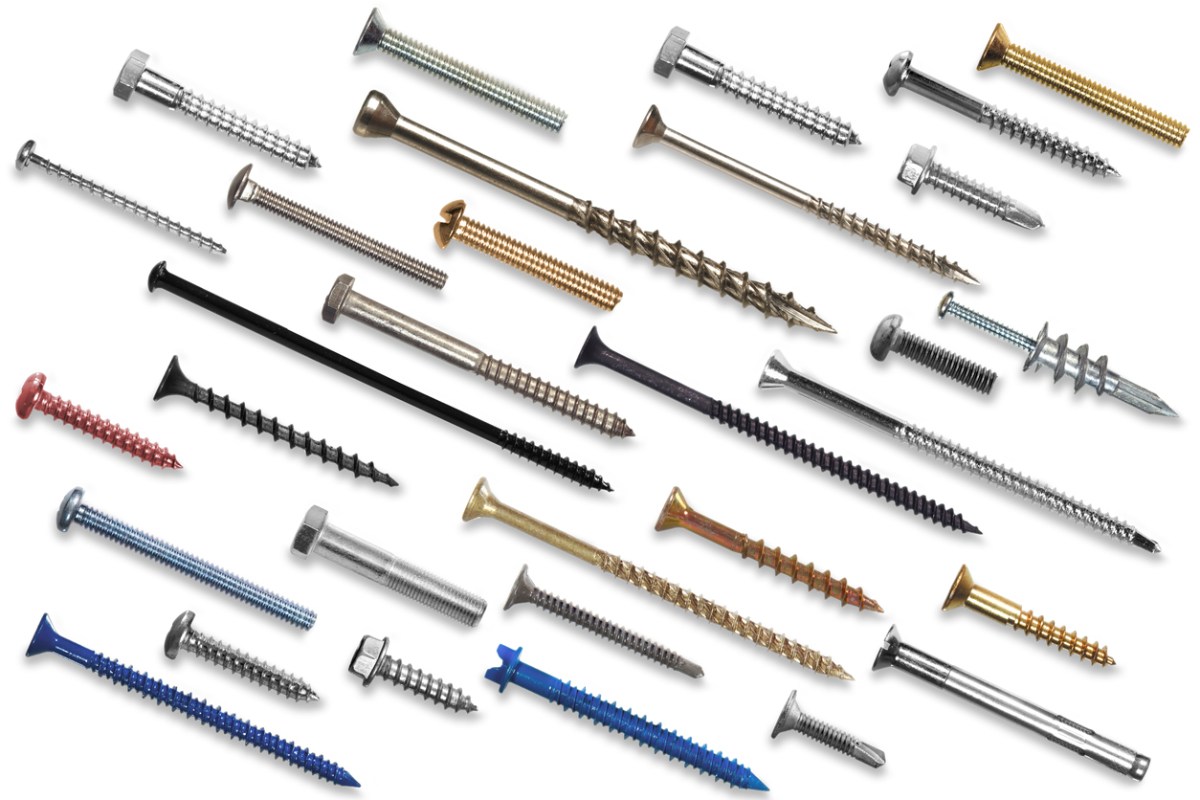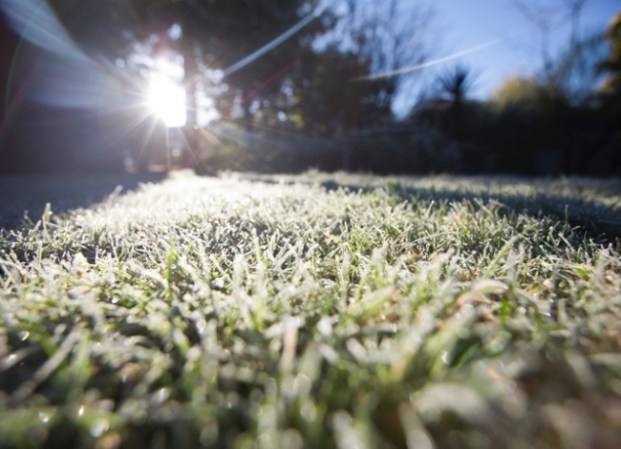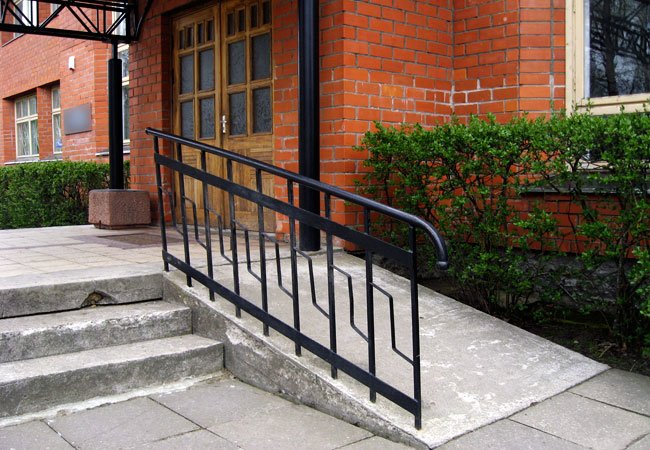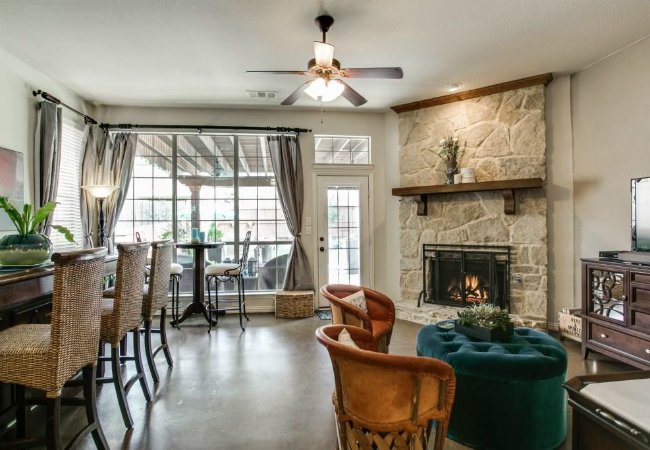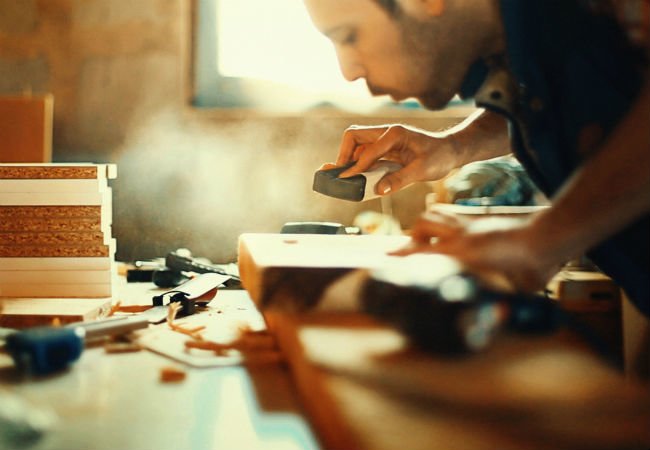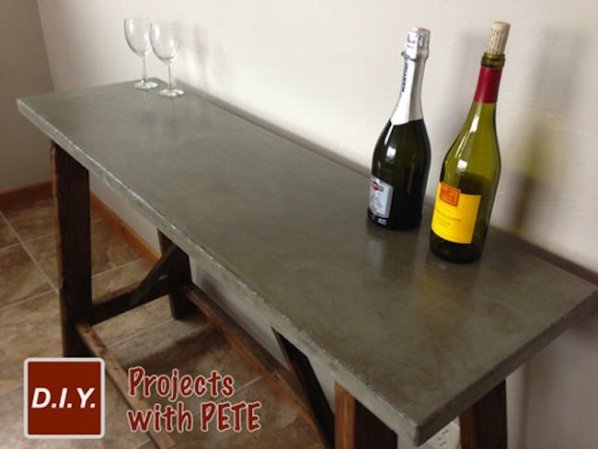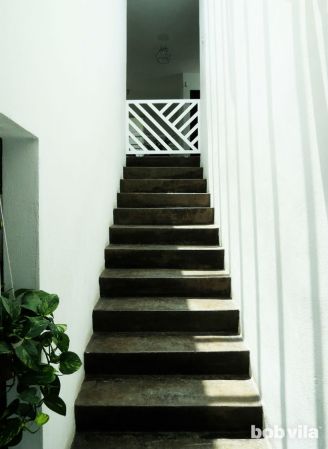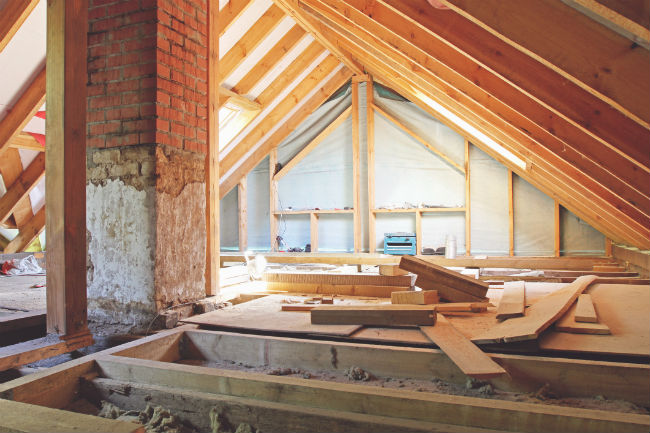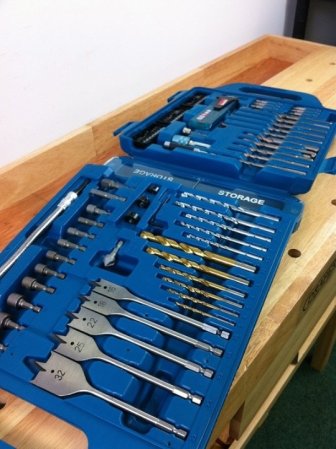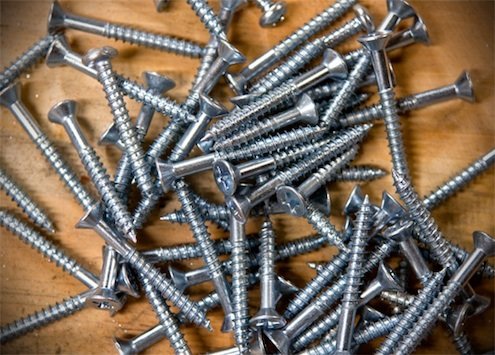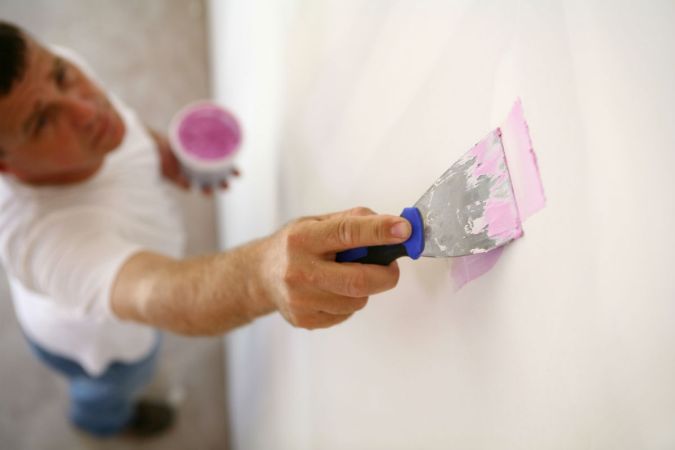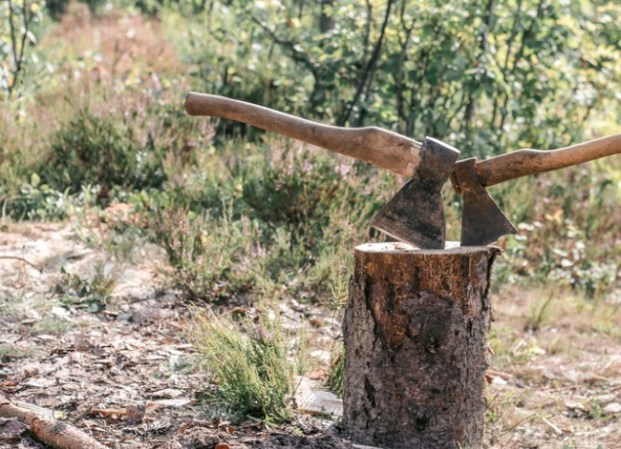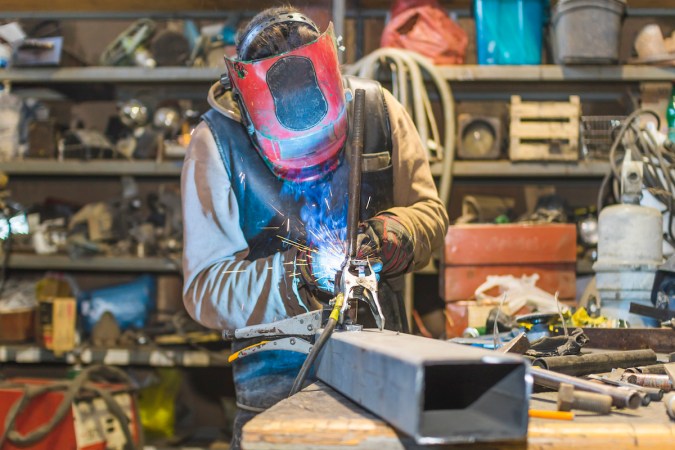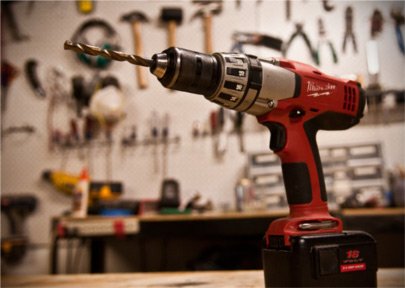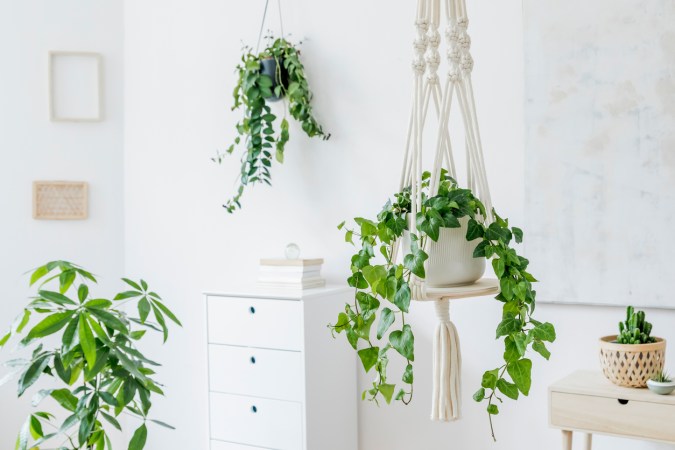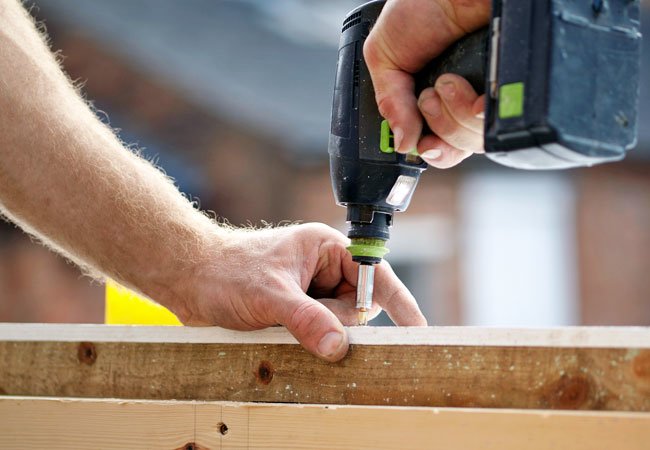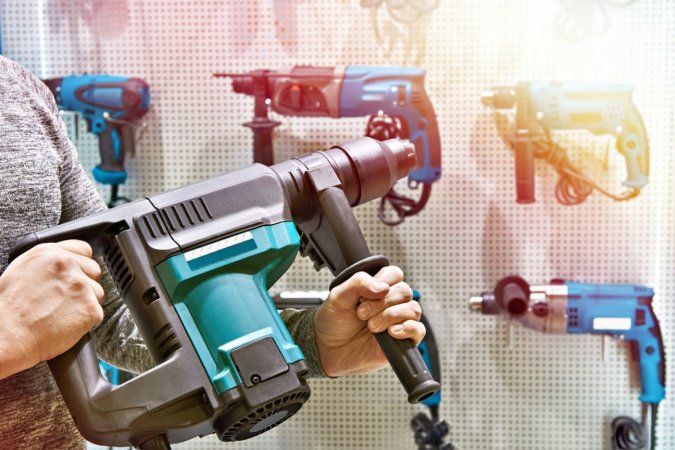We may earn revenue from the products available on this page and participate in affiliate programs. Learn More ›
Though they may not be much to look at, screws hold a place of honor in the construction, hobby, and furniture-making industries. From wall framing and cabinetmaking to everyday projects like building a wood bench, these functional fasteners literally hold everything together. For this reason, it’s crucial to choose the right screw for your project.
The screw aisle at the local hardware store is packed with seemingly endless options. Here’s why: Different projects require different types of screws. The more time you spend building and repairing things around the house, the more familiar you’ll become with the following five types of screws—and know when and how to use each type.
Read on to learn about the most common types of screws, as well as screw head and drive types. Soon you’ll know how to distinguish one variety from another, which will make your next trip to the hardware store a whole lot quicker.
Types of Screw Heads
Because screws are driven into wood and other materials, the verbs “drive” and “screw” are interdependent when it comes to fasteners. Driving a screw just means exerting the twisting force necessary to insert the screw. The tools used to insert the screws are called drivers and include screwdrivers, drill/drivers, and impact drivers. Many have magnetic tips to help hold the screw in place during insertion. Drive type indicates the design of the driver that is best suited for inserting a specific type of screw.
RELATED: The Best Screwdriver Sets for DIYers and Pros
Drive Types
Before we talk about which types of screws are right for the specific projects on your to-do list, let’s talk about how most screws are inserted today. For best grip, the design on the screw head coordinates with a specific screwdriver or power drill bit.
Take Phillips screws, developed by the Phillips Screw Company, as an example: This popular fastener is easily recognizable by the “+” on its head and requires a Phillips head screwdriver to twist it into place. Since the Phillips screw’s invention in the early 1930s, a number of other screw heads have hit the market, including recessed 6-point and 5-point stars, hex-head and square-head designs, and a numerous combined designs, such as a cross between recessed square and Phillips head that are compatible with multiple drill bits.
When shopping for a fastener for your project, keep in mind that you’ll need to coordinate the screw head design to the right driver bit. Fortunately, drill bit sets come with multiple bits, which fit virtually every standard screw head size and design configuration. Other common screw drive types include:
- Slotted: This very common type features a straight line through the middle of the screw head and it’s often used with manual screwdrivers.
- Hex: Named for its six-sided shape, hex screws can have one of two head types: an external hex head that requires a wrench or socket to drive, or an internal hex head that requires an Allen wrench.
- Torx: Also called “star” heads, Torx screws have an internal star shape that requires the use of a matching Torx driver or drive bit.
- Square: Featuring an internal cube-shape, a square screw drive resists stripping out the head, and requires a square bit or driver of the same size.
- Quadrex: Not as common as the other types, a quadrex screw drive is a combination of both a Phillips and a square drive. It can be inserted with either a dedicated quadrex driver, or with a square or Phillip’s driver or bit of the same size.
RELATED: 5 Types of Screwdrivers Every DIYer Should Get to Know
Head Styles
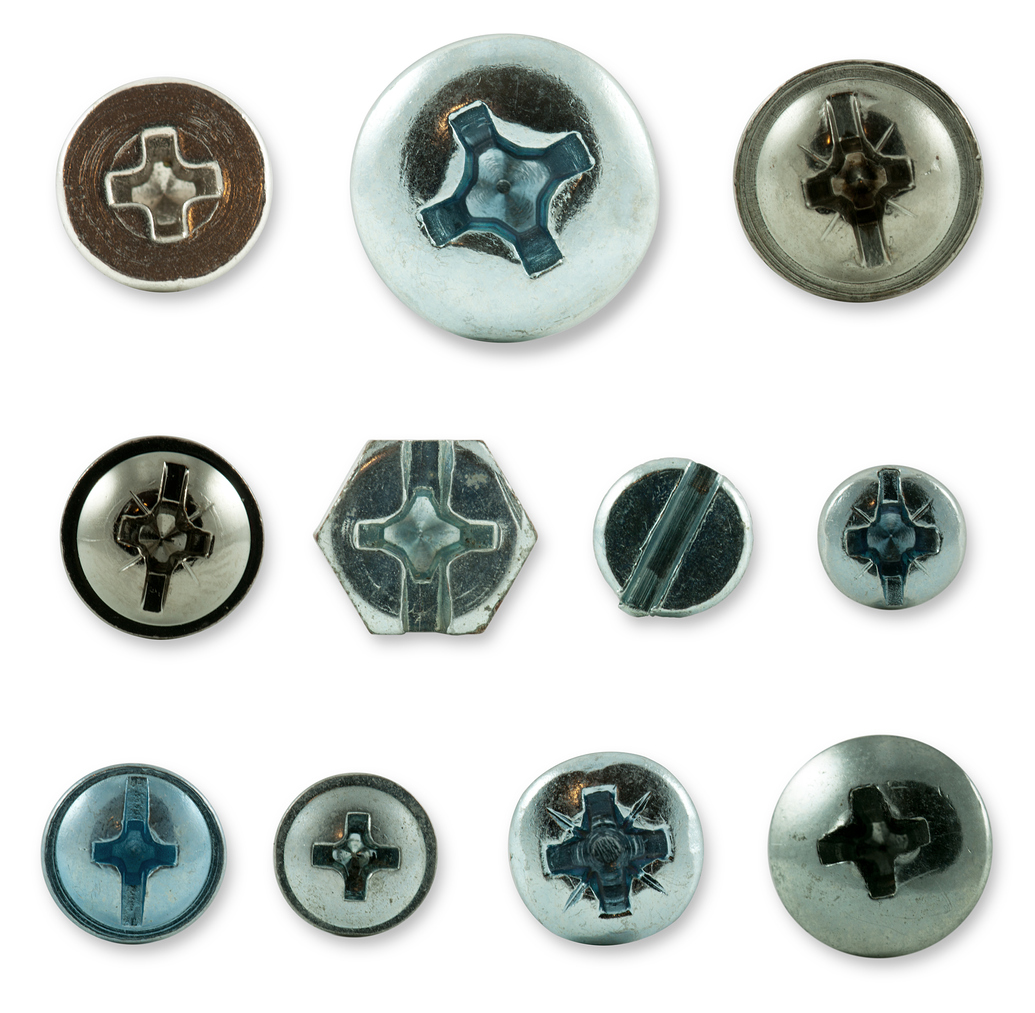
In addition to head types, another characteristic that differentiates screws are whether they’re countersink or non-countersink. The right choice for you will depend on the kind of project you’re doing, and whether you want the head of the screw to sit below the surface of the material.
- Countersink screws: This type of screw is preferred when the craftsperson wants a smooth, flat surface. When fully inserted, a countersink screw should be flush with the material’s surface. One of the most common types of countersink screws are drywall screws, which have bugle-shaped heads. Their tapered head design allows the DIYer to insert drywall screws just beneath the surface of the drywall without damaging it. The slight indentation that screw leaves can then be filled with drywall compound to create a smooth wall.
- Non-countersink screws: Available in a wide range of sizes and styles, non-countersink screws have heads that sit directly on the material’s surface. Most screws are non-countersink screws.
Standard Screw Sizes
Standard screw sizes are determined by the diameter of the screw’s shaft, and most screw sizes are available in multiple lengths. There are non-standard screws are out there, but they’re usually labeled for a specific use (such as “eyeglass screws”) rather than identified by size. The following are among the most common standard screw sizes:
- #4 screw: These small screws are just 7/64 inches in diameter and available in lengths ranging from ⅜ inch to ¾ inch. They’re used for things like small crafts and light-duty hinges.
- #6 screw: Also a light-duty screw, a #6 screw is 9/64 inches in diameter and is typically available in ½-inch to 1 ½-inch lengths. It’s best suited for crafts and children’s furniture.
- #8 screw: An excellent all-purpose screw, the #8 screw is 5/32 inches in diameter. The #8 can be purchased in lengths ranging from 5/8 inch to 3 inches. It’s suitable for light construction, such as cabinetmaking.
- #10 screw: The diameter on a #10 screw is 3/16 inches, and is typically found in 3/4-inch to 4-inch lengths. This screw is used for general construction purposes, such as building decks and storage sheds.
- #12 screw: Designed for heavy-duty use—we’re talking structural framing—a #12 screw is 7/32 of an inch in diameter. They range in length from ¾ inch up to about 6 inches.
Common Screw Types
How are types of screws classified? A screw’s type—or the way you ask for them at the hardware store—is usually dependent on the material the screw is meant to fasten. Below are some of the most common types of screws used in home improvement projects.
1. Wood Screws
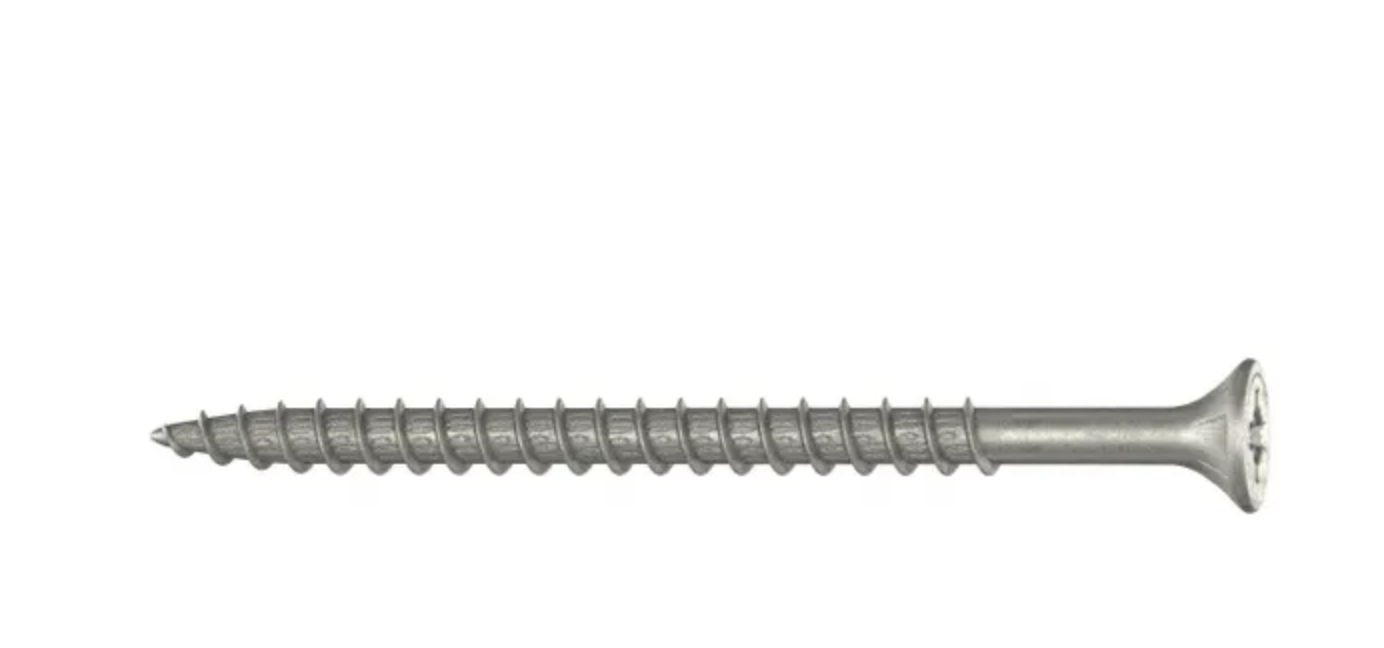
Wood screws feature coarse threads to grip the wood securely until the top of the screw shank, just under the head, where it is often smooth. This design allows for tighter connections when attaching wood to wood.
For this reason, wood screws are also sometimes called “construction screws.” As the screw is drilled to nearly its full depth, the smooth part at the top of the shank spins freely so as not to force the head deeper into the board. Meanwhile, the threaded tip of the screw bites into the bottom piece of wood, drawing the two boards snugly together. The tapered head of a wood screw allows it to sit flush or slightly below the surface of the wood.
When choosing screws for basic wood construction, select a length that will allow the tip of the screw to penetrate the bottom board by about 2/3 the thickness of that board. While on the subject of sizing, you’ll find that wood screw widths vary considerably, from #0 (1/16 inch in diameter) to #20 (5/16 inch in diameter).
The most common size of wood screw is #8 (approximately 5/32 inch in diameter), but as we’ve said before the best size of screw for you will depend on the project or task you’re pursuing. Finish screws, for example, are designed for attaching trim and molding and therefore feature smaller heads than standard wood screws; these are tapered to allow you to insert the screw just beneath the surface of the wood, leaving a tiny hole that you can fill with wood putty.
Wood screws come in both interior and exterior styles, the latter often galvanized or treated with zinc to resist rusting. DIYers who are working on exterior projects involving pressure-treated wood should look for Alkaline Copper Quaternary (ACQ)-compatible wood screws. These will not corrode when used in conjunction with wood that’s been pressure treated with copper-based chemicals.
Traditionally, inserting screws in a way that prevents wood from splitting requires DIYers to first drill a pilot hole and then insert the screw. Screws identified as “self-tapping” or “self-drilling” feature a sharp tip that mimics the drilling action of a drill bit, making pre-drilling a thing of the past. Since not all wood screws are self-tapping, be sure to read the screws’ packaging carefully.
Best For: Use to connect wood to wood, including framing wall studs, attaching molding, and building bookcases.
Our Recommendation: SPAX #8 2 1/2-inch Phillips Square Drive Flat-Head Full Thread Zinc Coated Multi-Material Screw—Get a 1-pound box at The Home Depot for $9.50.
The course threads on wood screws help them bite into the wood and form tight, secure connections.
2. Drywall Screws
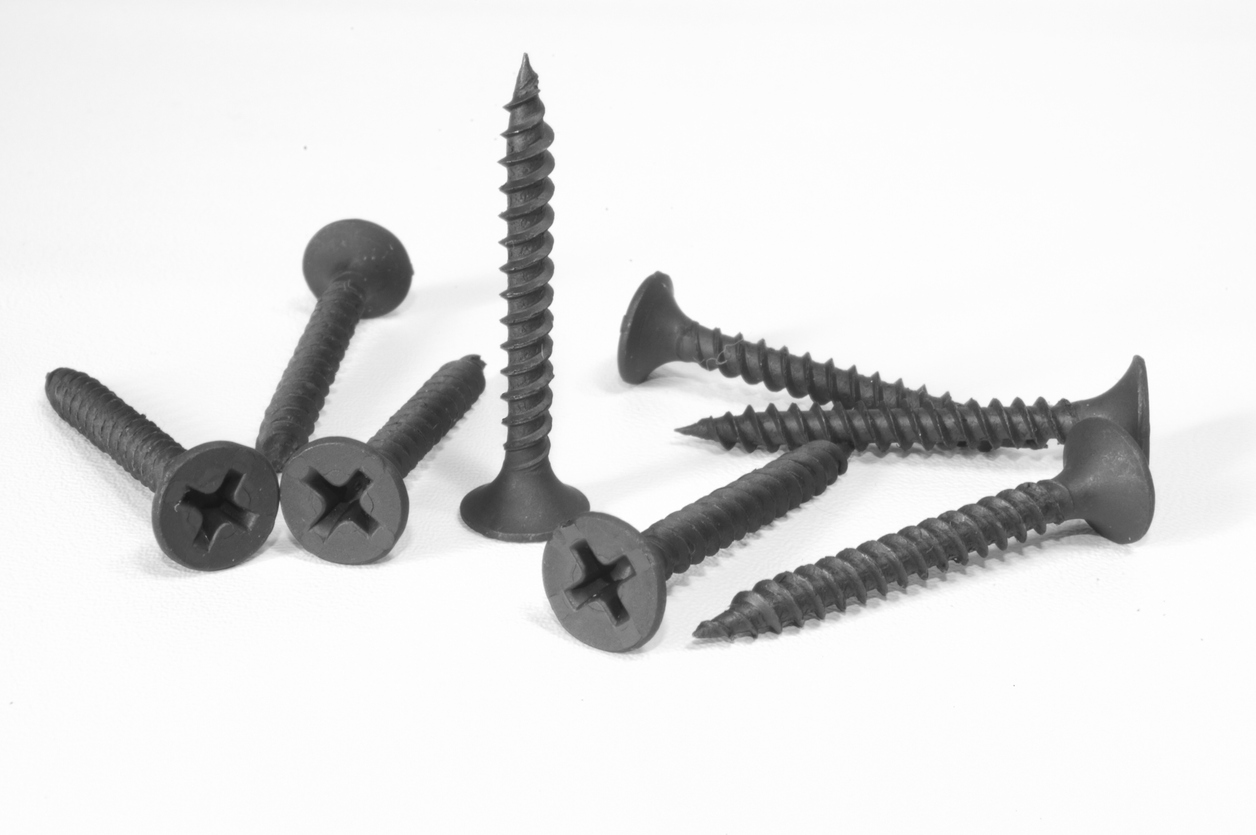
Intended only for installing drywall panels, this type of screw ranges in length from 1 inch to 3 inches. Their “bugle” head is designed to countersink slightly in the surface of the drywall panel without tearing the panel’s protective paper covering; hence the name bugle head screw. No pre-drilling of holes necessary here; when these self-tapping screws reach the wood studs or joists, they dig right in. Standard drywall screws are suitable for installing drywall panels to wood framing, but if you’re installing drywall over metal studs, look for screws that specify use with metal studs.
Note: You’ll also need to invest in a drywall dimple bit to install these, since it isn’t always included in a standard bit set. This resembles a Phillips head bit but features a small protective ring, or “shoulder,” near the tip of the bit that prevents the screw from being installed too deeply.
Best For: Drywall screws are the best option for attaching drywall panels to wall studs.
Our Recommendation: Grip-Rite’s #6 x 2 in. Phillips Bugle-Head Coarse Thread Sharp Point Drywall Screws—Get a 1-pound box at The Home Depot for $7.47.
The sloped, bugle shape of drywall anchor screws makes it easy to countersink them in drywall without damaging the panels.
3. Masonry Screws
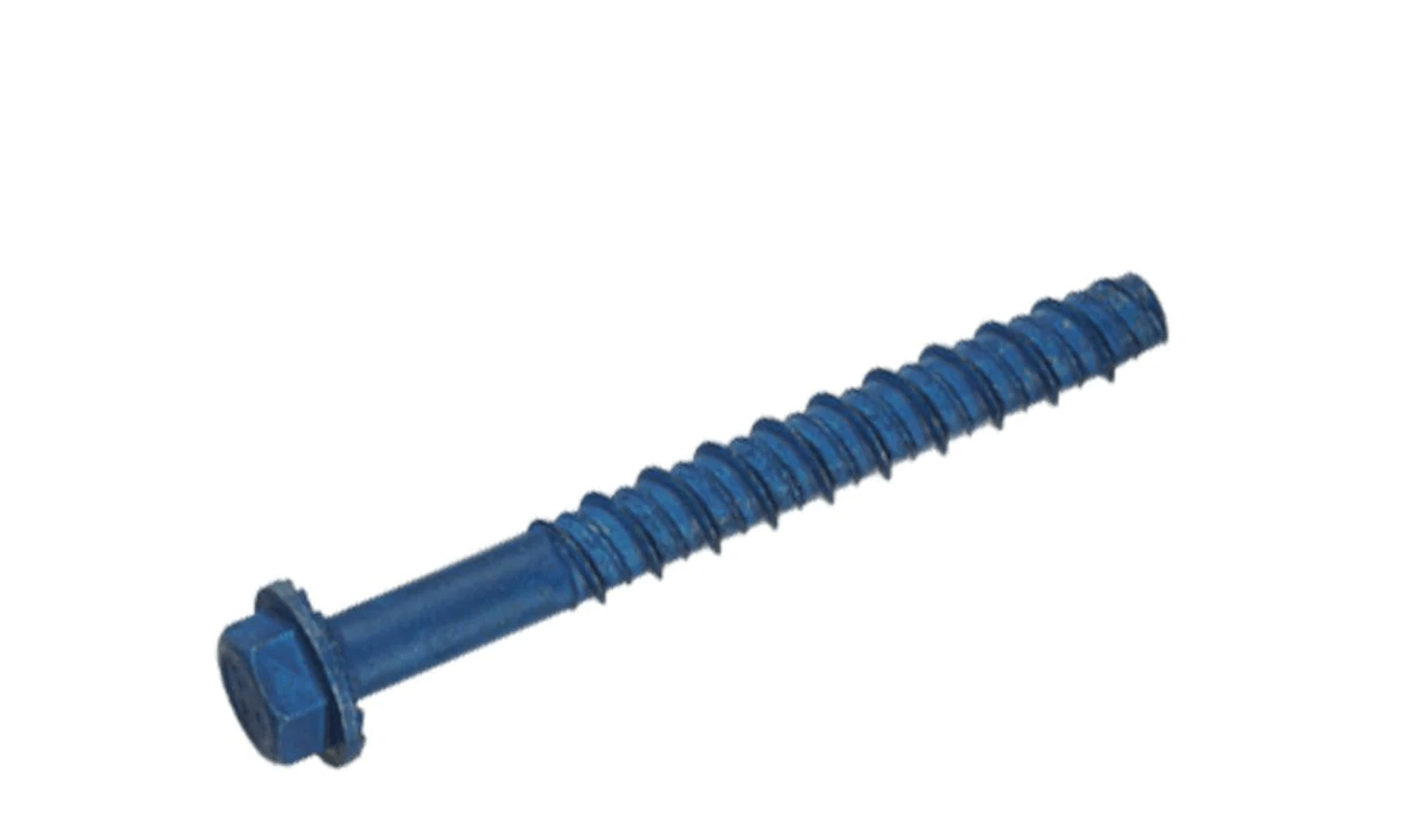
The first thing you’ll notice about masonry screws, also called “concrete anchors,” is that many are not pointed at the tip (although some are). A masonry screw does not bore its own hole; instead, the user must pre-drill a hole before inserting the screw. While some masonry screws have Phillips heads, many have raised hex-heads that require installation with a specific matching hex-head bit.
Check the screw’s packaging for which bit and exact size are needed to pre-drill holes and then drill in the anchor. A hammer drill with a masonry bit is necessary for pre-drilling, but a regular drill can insert these screws.
Best For: Use to attach wood or metal to concrete, such as attaching wood floor plates to a concrete foundation or basement floor.
Our Recommendation: A good screw for this task is the Tapcon 3/8 in. x 3 in. Hex-Washer- Head Large Diameter Concrete Anchor—Get a 10-pack from The Home Depot for $21.98.
Masonry screws feature tall and shallow threads designed to help secure the screw in concrete.
4. Decking Screws
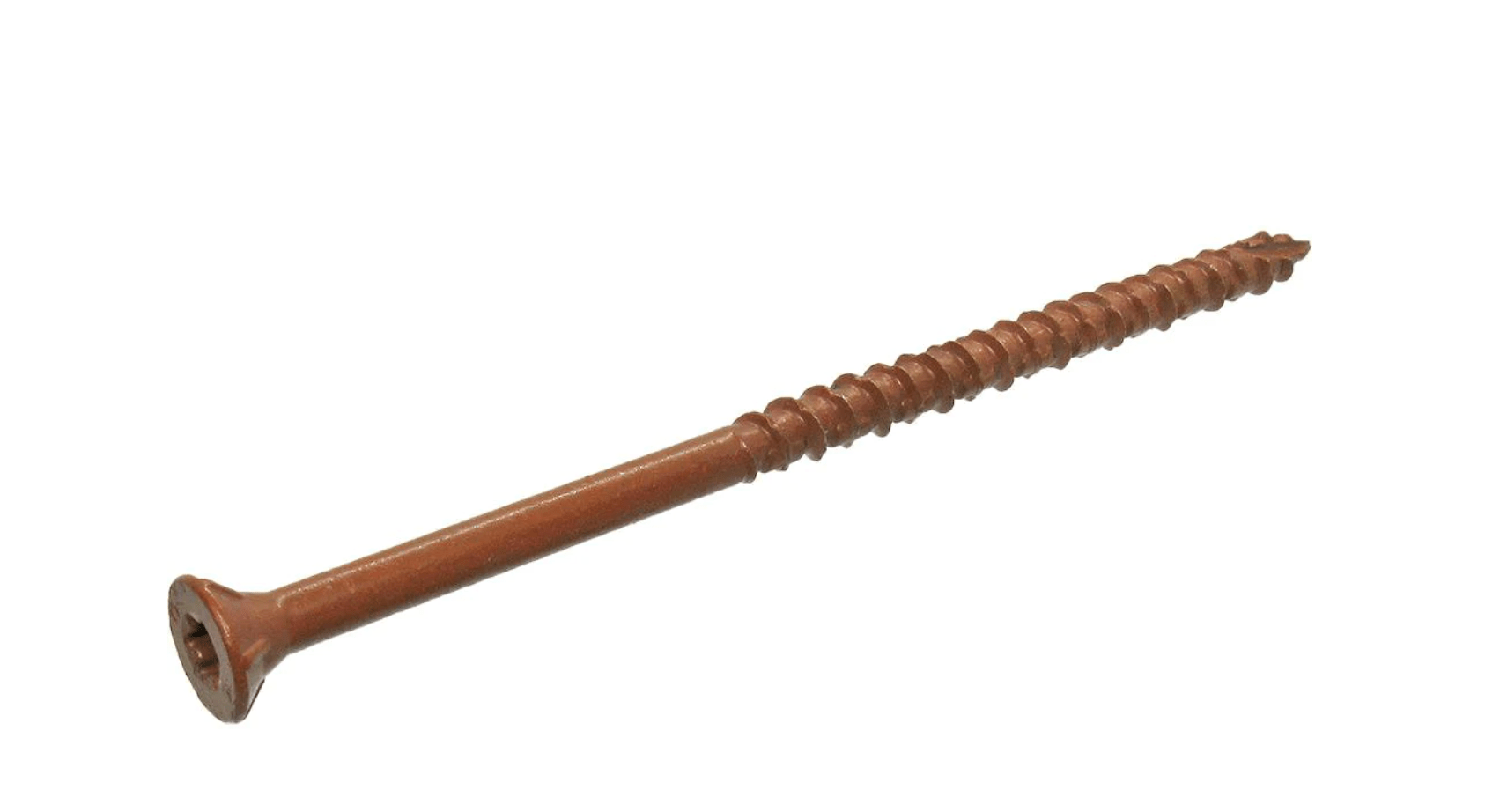
The screws used to fasten decking, or “deck flooring,” to a deck’s joist system are designed to countersink so the tops are flush or just a hair below the surface of the wood. Like wood screws, these exterior screws feature coarse threads and a smooth upper shank and is manufactured to resist rust and corrosion. If you’re installing pressure-treated wood decking, use only ACQ-compatible decking screws.
Many decking screws are self-tapping, and come in both Phillips and star-drive heads. Their length varies from 1 5/8 to 4 inches long and they are specifically labeled as “Decking Screws” on the package. Composite decking manufacturers specify the use of stainless steel decking screws when installing their product.
Best For: Use decking screws for attaching decking boards to a deck’s joist system. These countersink screws will not stick up above the decking, which is ideal for surfaces on which you’ll be walking.
Our Recommendation: Deckmate #10 x 4 inch Red Star Flat-Head Wood Deck Screw—Get a 1-pound box from The Home Depot for $9.97.
The tapered head on a decking screw makes it easy to countersink into the decking boards.
5. MDF Screws
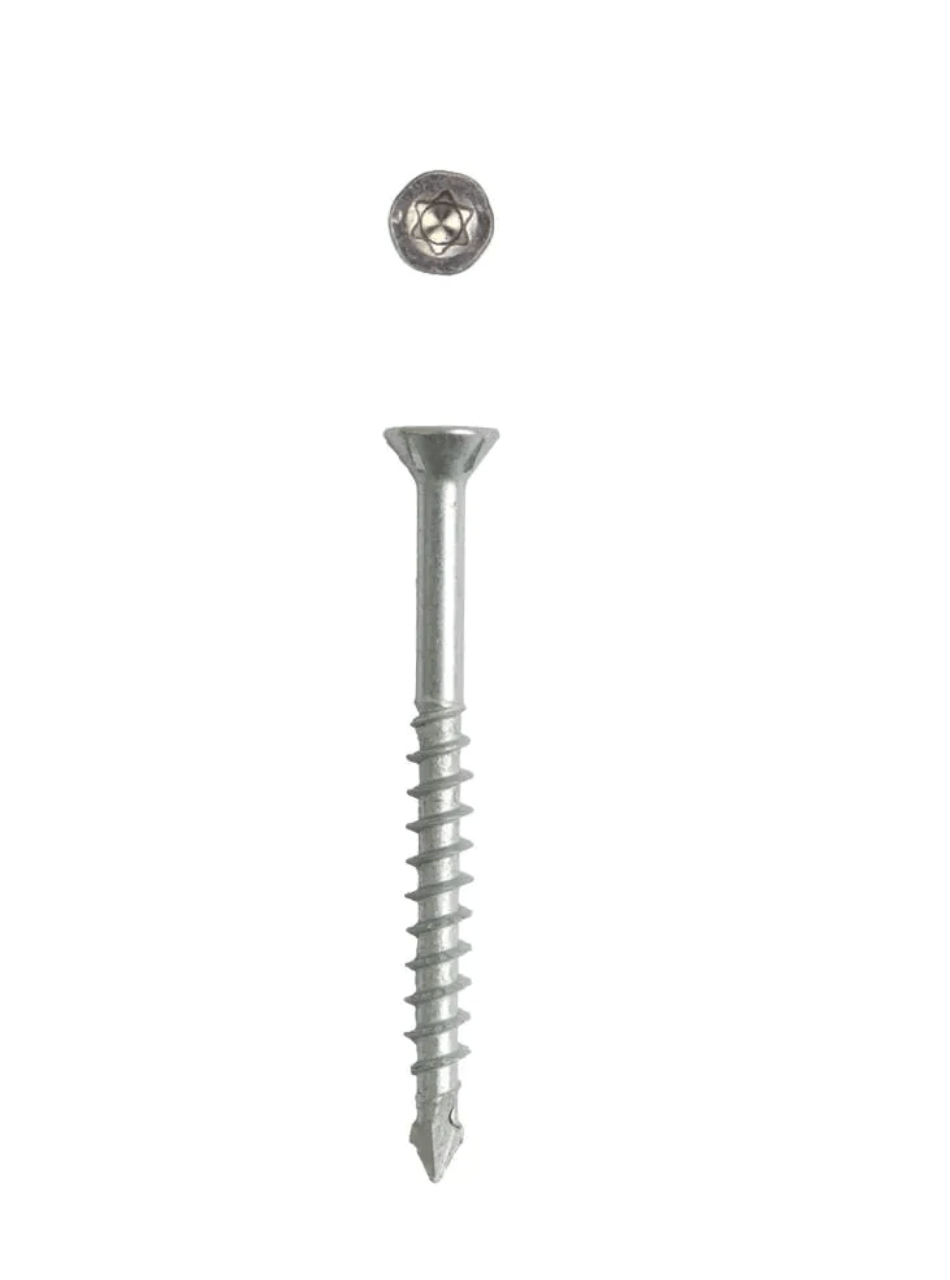
Medium Density Fiberboard (MDF) often appears in the home in the shape of interior trim, such as base and molding, and in the construction of some assembly-required bookcases and shelving. Harder than solid wood, MDF is more difficult to pierce using regular wood screws without splitting.
That leaves two options: Drill pilot holes in MDF and use regular wood screws, or reduce your work time and use self-tapping MDF screws. The MDF screws come in the same sizes as regular wood screws and feature star-drive heads, but are designed to eliminate splitting and the need to drill pilot holes.
Best For: So that you don’t need to drill pilot holes when installing MDF, use MDF screws that tackle both drilling and screw insertion simultaneously.
Our Recommendation: SPAX #8 x 1-3/4 in. T-Star Plus Drive Partial Thread Zinc Coated Medium Density Fiberboard (MDF) Screws—Get a box of 200 from The Home Depot for $6.97.
The tip of an MDF screw features a tiny drill bit—rather than a standard screw bit—so it drills a hole for the screw while the screw is being inserted.
Other Types of Screws
When you’re shopping for screws, you’ll notice a lot of different terms in the mix: some terms define the best screw for a certain type of material (for example, wood screws) and other terms have to do with special usage, such as tamper-proof screws. Over time, most DIYers will eventually become familiar with these other ways to identify and shop for screws:
- SPAX screws: A familiar brand name at hardware stores, SPAX manufactures a wide variety of construction fasteners including decking screws, drywall screws, and even screws designed for building log homes. SPAX screws are sold by many national retailers such as The Home Depot and Menards.
- Sheet metal screws: Designed for attaching sheet metal to sheet metal, wood, or other materials, these screws feature sharp tips and threads designed to penetrate metal. They are often made from stainless steel, although some are zinc coated.
- Binding screws: Also called “binding posts” or “Chicago binders,” binding screws are two-part fasteners that are used to hold two or more items together. They’re often used by crafters or those who want to create DIY booklets by binding the pages together. The bottom part of a binding screw is a narrow barrel with threads inside. Once the barrel is slipped into a pilot hole, a simple screw is inserted from the other side and tightened to bind the item.
- Tamper-proof fasteners: Tamper-proof screws have screw heads that require special drivers to insert and remove them. For example, a Pin Torx screw is considered tamper proof because it features a Torx opening but has a pin sticking out in the middle. A regular Torx driver won’t be able to remove it. A special Security Torx Bit is necessary to remove it.
- Machine screws: Similar to bolts (see below), machine screws are used in threaded holes, such as those found in engines and industrial equipment. Like standard screws, they don’t have sharp tips.
RELATED: How to Choose the Right Screw
Screws vs. Bolts: What’s the Difference?
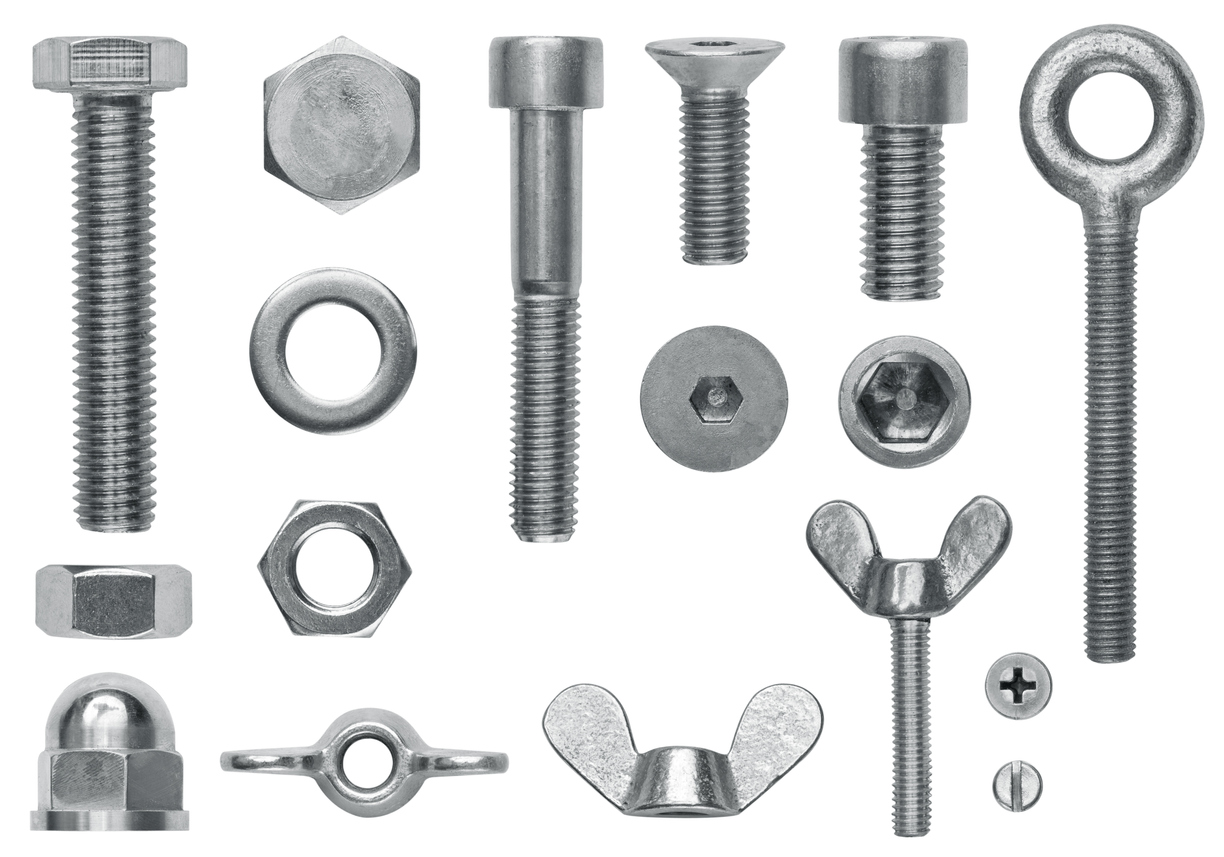
While some use the terms “screw” and “bolt” interchangeably, these fasteners are very different. A screw is designed with threads that bite into wood or other material and create a strong connection. Bolts are made to insert into an existing hole and require a nut on the other side of the material to secure the bolt in place. Screws are typically shorter than the material they’re used on, while bolts are longer, so a nut can be attached.
The following are among the most commonly used types of bolts.
- Hex bolt: This bolt features a hexagon-shaped head, and a wrench or socket is required for tightening a hexagon-shaped nut on the other end, which is called the chamfer. Hex bolts are made for use in various materials, including wood, plastic, and metal.
- Anchor bolt: Most commonly used to secure wood plates to concrete, anchor bolts are inserted into the tops of concrete walls while the concrete is still wet. After the concrete hardens, holes are drilled into the wood sill plates to match the configuration of the bolts, and then nuts are used to firmly secure the plates to the top of the concrete wall.
- Carriage bolt: Used most often to attach metal to wood, a carriage bolt has a smooth domed head that prevents the bolt from being loosened from the head side. A nut is used on the chamfer end to tighten the bolt in place.
- Lag bolt: After explaining that bolts and screws were different, here’s an exception. A lag bolt is more like a screw than a traditional bolt, and some call it a “lag screw.” It’s typically longer, made from more robust steel, and used to make strong connections in structures, such as load-bearing wall framing. A lag bolt does not require a nut to hold it in place.
- Toggle bolt: This bolt has a specific use: it increases the holding power of a fastener inserted in a hollow wall, such as exists in a stud wall covered with drywall. A toggle bolt comes with wings, and when inserted through drywall, the wings fold out against the inside of the panel, which offers additional holding power.
RELATED: The Best Bolt Cutters for DIYers
Final Thoughts
The number and type of screws available may seem overwhelming to many DIYers, but they’re all useful in their own ways. In addition to learning the most common standard screw sizes, it’s also helpful to know that different types of screws are available for specific purposes, such as sheet metal screws or eyeglass screws.
The most important thing for DIYers to remember when shopping for screws is to match the screw head type to the driver. It doesn’t help to buy tamper-proof screws if you don’t have the matching driver to use them.
FAQs About Types of Screws
The fastener market is vast and consistently growing as manufacturers develop different and better screws and drivers for specific purposes. Those who are exploring various methods of fastening materials will likely have some questions. Below are answers to some of the most popular queries.
Q. How many types of screw are there?
There are dozens of types of screws, and they range in diameter, length, and purpose. Both nails and screws can be used to fasten and connect various materials.
Q. What are Torx screws?
A Torx screw features a six-point screw head, either internal or external, and requires the use of a matching Torx driver bit to insert and remove.
Q. What are concrete screws?
Designed for insertion in concrete, these screws, such as Confast Screws feature alternating deep and shallow threads deemed best-suited for holding in concrete. They’re typically blue and feature Phillip’s screw heads.
Q. What is a Panhead screw?
Useful in various materials, panhead screws feature a little drill tip—rather than a screw tip—that eliminates the need to drill pilot holes before inserting the fastener.
Q. What are structural screws?
These common screws are used in construction and home repair projects. They feature strong steel for shear strength, and they come with a variety of screw head types.

